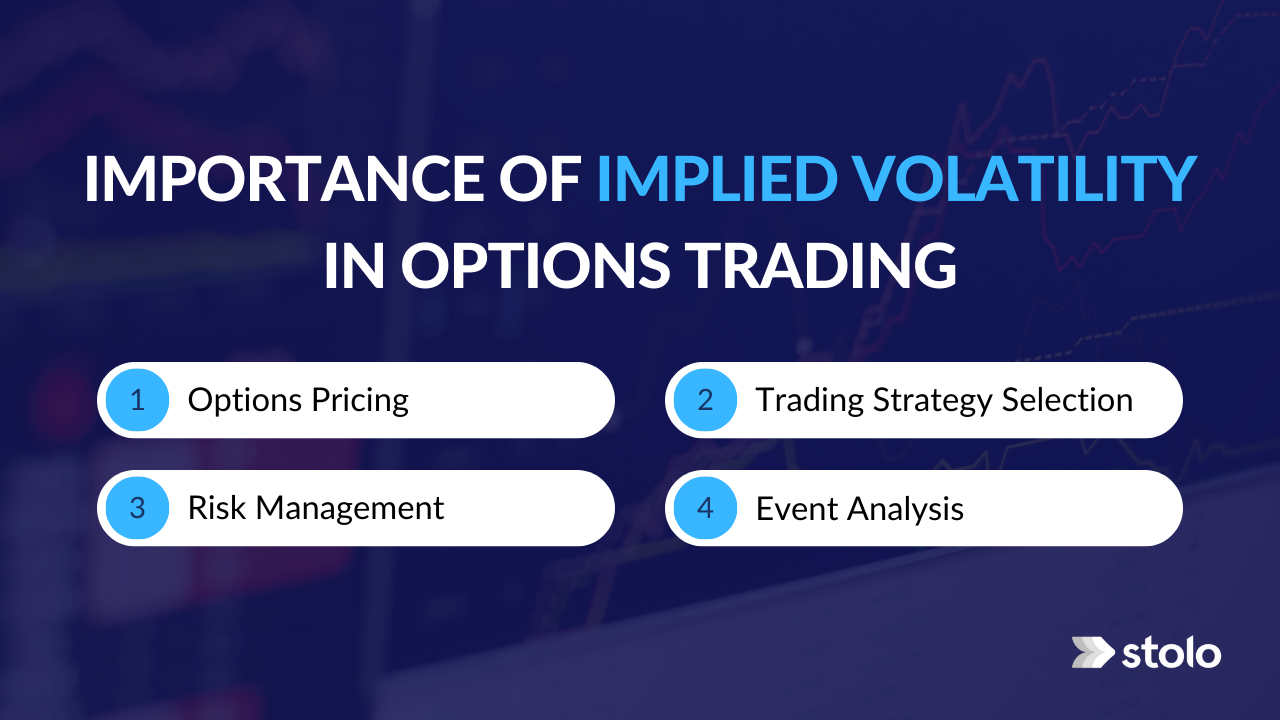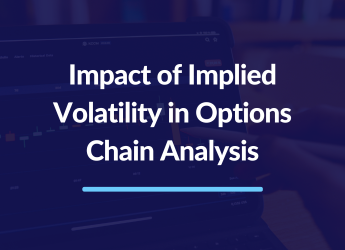Options trading provides traders with various techniques and possibilities to benefit from price swings in the financial markets. Implied volatility is essential in options pricing and may significantly influence trading choices. However, It is a critical subject for traders to grasp. In this blog article, we’ll look at implied volatility, how to calculate it, and how options traders may use it to their advantage.
What is Implied Volatility (IV)?
Volatility is the amount of price swings in an underlying asset. In contrast, Implied volatility (IV) measures the market’s anticipation of future volatility. It is calculated from the price of an option contract. It shows the market’s consensus on the size of possible price fluctuations.
The implied volatility of an underlying asset represents the perceived uncertainty and risk. A higher IV implies more expected price swings, while a lower IV indicates relatively steady pricing expectations.
Implied Volatility Calculation
One cannot measure implied volatility directly or compute it using a formula. Instead, you can calculate it using option pricing models such as the Black-Scholes or the binomial options pricing model. To assess it, these models employ inputs such as the underlying asset price, strike price, time to expiry, risk-free interest rate, and the market price of the options contract.
Importance of Implied Volatility (IV) in Options Trading

Options Pricing
Implied volatility is an important component in option pricing models. It directly impacts the premium or price of an options contract. Option premiums rise as IV rises, while option premiums fall when IV falls. When analysing option prices and potential profitability, traders must understand and account for implied volatility.
Trading Strategy Selection
Implied volatility assists traders in determining the attractiveness of various options trading techniques. In high IV settings, some techniques, such as selling options to collect premiums, are more advantageous, as bigger premiums offer greater profit potential. On the other hand, buying options may be more attractive in low IV settings due to reduced premium costs.
Risk Management
Implied volatility can give insight into an underlying asset’s perceived risk. Higher IV denotes greater uncertainty and the possibility of higher price fluctuations, which may need changes to risk management measures. Based on the implied volatility, traders might modify position sizes, use stop-loss orders, or hedge their bets.
Event Analysis
Implied volatility tends to rise during market events or earnings releases that significantly influence the price of an underlying asset. Traders can use changes in implied volatility to measure market expectations and possible trading opportunities surrounding these occurrences.
Trading Options with Implied Volatility
Traders can use implied volatility to guide their options trading decisions in a variety of ways:
Trading in Volatility
Traders can make directional bets on implied volatility by trading options tailored to profit from volatility fluctuations, such as straddles or strangles.
Choosing a Strategy
Based on market expectations, implied volatility can inform strategy selection. High IV may favour credit spreads or iron condors, while low IV may favour long straddles or strangles.
Skew in Implied Volatility
Implied volatility varies depending on the strike price and expiration date. Traders can use implied volatility skew to spot mispricings and trading opportunities.
Option Trading
When implied volatility is high, selling options can generate attractive premiums. However, traders must carefully control risk. Traders can prepare for huge price fluctuations in the underlying asset.
Event Investing
During market events, implied volatility tends to surge. Traders can profit from this by executing options before the event and benefiting from higher premiums.
Conclusion
Understanding Implied volatility is essential in options trading because it represents market expectations of future price volatility. It impacts option pricing, trading techniques, and risk management choices. Traders may make better-informed decisions, optimise strategy selection, and boost their profitability in options trading by knowing implied volatility and its consequences. Keep an eye on IV levels, react to market situations, and use this essential tool to your advantage.

